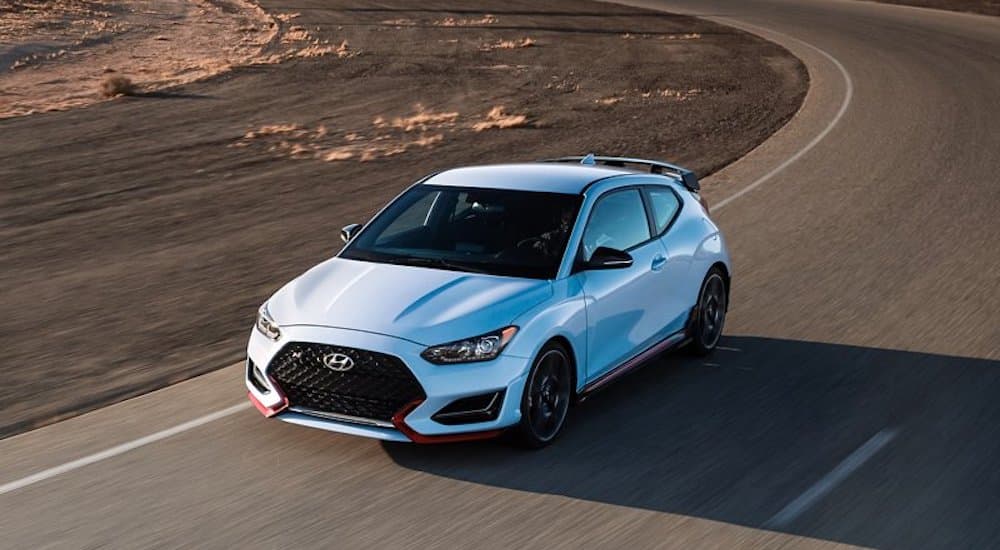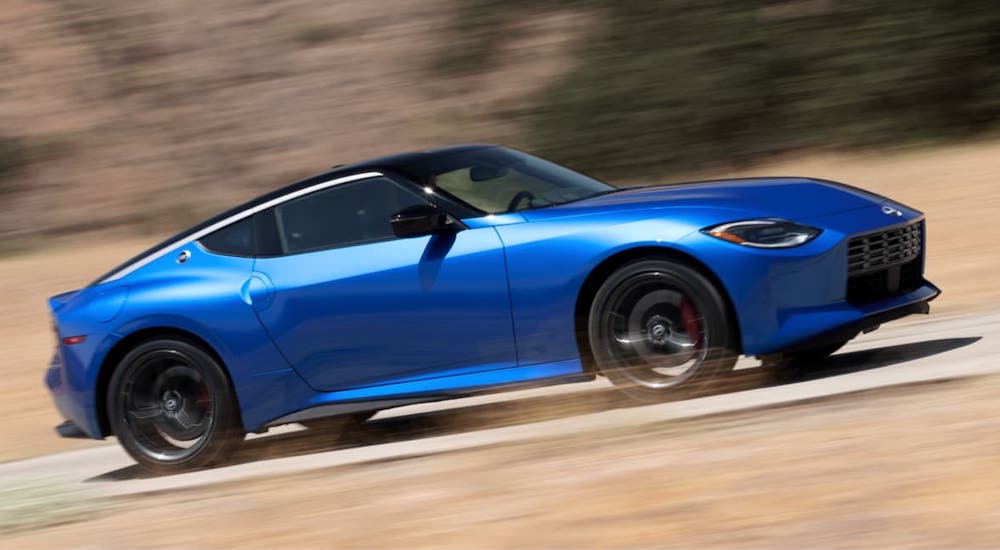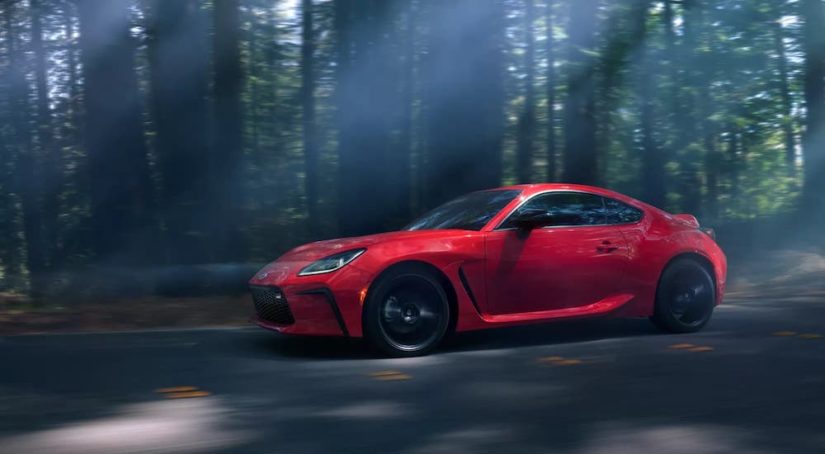Somewhere in a long-forgotten junkyard, a vehicular necropolis where dead cars are buried and forgotten, a lone figure works through the night, digging for the worthy dead. He gathers parts: a transmission here, an engine there, and tires that can be stitched together once more. Hours later, he pieces together the disparate components like reclaimed organs and creates a monstrous vehicle to forever haunt the nightmares of other drivers and unwary pedestrians! That’s not what this is about, however, because you’re (probably) not a mad scientist, and you’re (probably) not trying to piece together an unholy vehicular abomination.
Instead, you’re just trying to take a test drive on a vehicle you’re interested in and likely coming up against a big problem: finding the car you want. With the ongoing chip shortage and such high demand for high-end vehicles, finding exactly what you’re looking for to take a test drive can be tough. Fortunately, you can piece together an experience and “Frankenstein” your way to a rough approximation of what your vehicle will be like. Let me show you how…
Research and Call Ahead
With test drives these days, one of the most important things you can do is research the kind of vehicle you are interested in and narrow down your options. Long gone are the days when you had to show up at a dealership and see what was out there––the Internet is your best tool for finding the perfect vehicle. You should never go to a dealership without already knowing what you want in a new car––that would waste your time and leave you open to being pushed toward something that really doesn’t work for you.
Most importantly, for our purposes today, this research is going to come in handy for when you’re ready to actually go for a test drive. Call any dealership you’re interested in going to and set up a time for your test drive––this will help you avoid waiting around and speed up the process. You should also use this call as a chance to find out if they actually have what you’re interested in. To be honest, they probably won’t have exactly what you want in your next vehicle, which is when you can put together a test drive by Frankenstein-ing together a single experience from several different tests.

Focus on Your Core Experience
So you call ahead, and the dealership you want to visit doesn’t have the exact combination of features you’re interested in. That’s fine––this is when you use the Frankenstein approach. Just like our eponymous doctor, you’re going to put together a test drive by using “parts” from different vehicles that are available. To begin with, the most important thing is that you focus on the core of your experience as a driver: the platform of the vehicle and its powertrain.
Platforms are essentially the foundation of a vehicle that everything else is built upon; they are often updated or changed with new generations for a particular model. More importantly, for our purposes, they’re commonly shared by different models from the same manufacturer or from brands that are part of a larger company. For example, the Ford Bronco and Ford Ranger share a platform. Similarly, the Chevy Silverado 1500 and the GMC Sierra 1500 are built on the same platform––this is true across many Chevy, Buick, and GMC models.
If you want to test drive a Chevy Silverado with a particular cab/bed configuration and engine, but they don’t have that setup available, then you can look for a comparable GMC Sierra. Yes, there will be some differences, but they’ll handle and ride almost identically, and it’s a great substitute for a test drive. The engine is just as important as the platform, which is why I mentioned it here too. You’ll find the same engine on different models across the lineups of a lot of brands out there, so use this to your advantage.
If you want to feel how a Kia Soul with its available 1.6L Turbo I-4 engine feels to drive, but the dealership you like doesn’t have that model with that engine on-hand, then ask about the Kia Seltos with the same engine. It will be a bit different since there are some differences in size and feel, but they’re the same engine in similar models, so you still get a good sense of whether that engine has the kind of “oomph” you’re looking for. Use this to your advantage in order to determine how a particular powertrain or setup feels on the road.
Consider Each Part and Test them All
The platform and engine are just the beginning; you can use this Frankenstein approach on pretty much every other aspect of the vehicle you want. If you’re interested in certain safety features, especially active driver-assistance features, but they don’t have them on the model you like there at the dealership, then ask about those features on other models. These days, manufacturers offer their safety systems as packages available on most or all of their models, and they generally work the same across the lineup.
If you’re worried about how aggressive a lane-keeping system on a particular model is, then make sure you take a test drive with that system active from that manufacturer. It really doesn’t matter if you’re driving a Chevy Malibu, Blazer, or Silverado––the safety systems are going to feel pretty similar across these models. Even if you want a Blazer, you’ll get a sense of how the systems work by trying them out in a Malibu.
This extends to other types of tech features and options, so keep this in mind as you look at what’s available at your preferred dealership. With the chip shortage still going strong, these kinds of features are in short supply, so it’s very rare to find everything you want in one model at a dealer for you to test out. Much like with safety features, however, these systems are offered in packages across the lineup, so you can check out an infotainment system, speakers, and driver display in another model to see how they work. It will function pretty much the same in the model you’re interested in––just be sure that they use the same generation of technology and software since some models get updated before others.

Other Test Drive Factors to Remember
As you’re getting ready for a test drive, keep in mind that some dealerships offer more features and options than others. For example, you’ll find some dealers that will bring a vehicle to you for a test drive, so you don’t even have to go to the dealership to try out a car you’re interested in. There are also dealerships that will let you take a vehicle home for 24 hours on a test drive so that you can see how it would fit into your lifestyle and how well it works for driving day and night. Not all dealers offer the same kind of experience, so look around at what’s available and ask about these things even if the dealership doesn’t advertise them.
Remember that the purpose of a test drive is to get a real sense of how a car, truck, or SUV will work for you in the long term. The more use and testing you can get out of it, the better, and you want to piece together what it would be like to own a car for many years. If you’re planning on having kids soon, then think about things like car seats and safety features that you might not care about today. Look at the specifics but also remember the big picture; this will let you put together all of these pieces into a single experience that represents what you’ll get from your vehicle for years to come.



